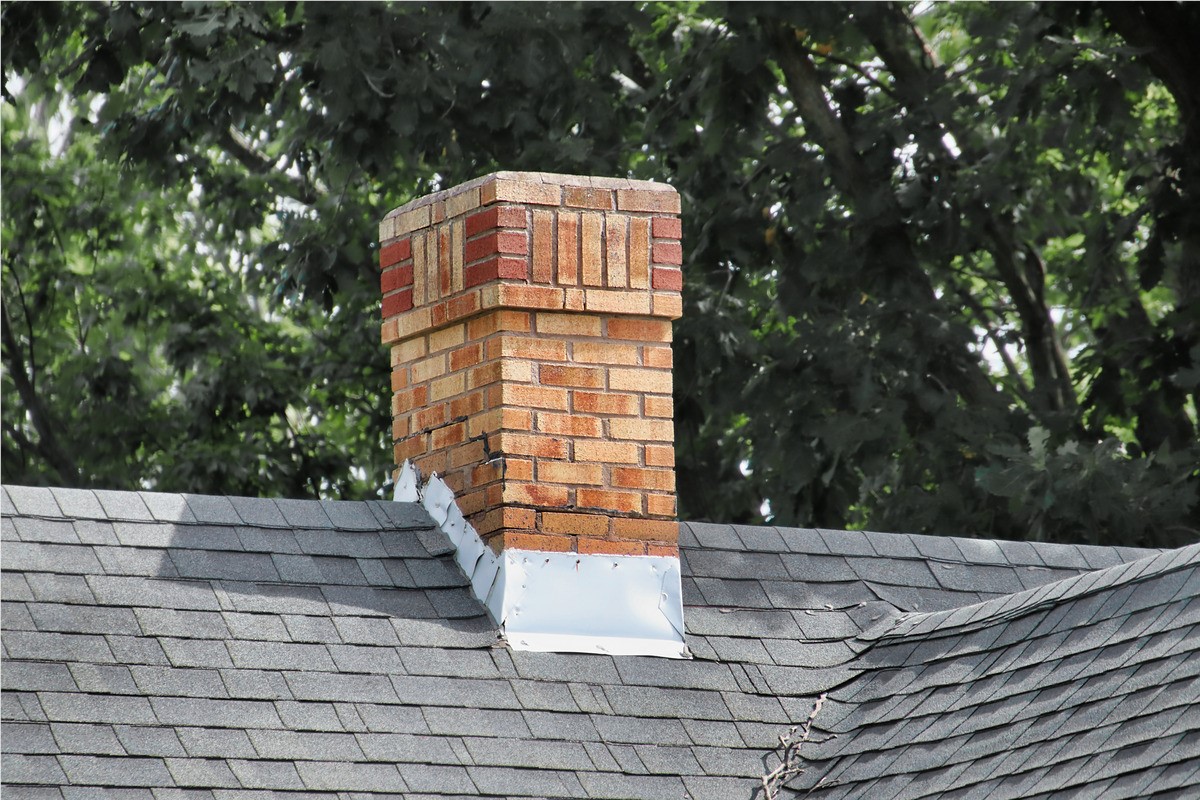
April showers bring May flowers, but amidst the blossoming beauty, it's essential to remember that your chimney endures the elements year-round, rain or shine. From the vibrant days of spring to the chill of winter nights, your chimney stands as a stalwart guardian, ensuring warmth and comfort within your home. However, just like any other structure, it's susceptible to wear and tear, and leaks can quickly turn a cozy haven into a damp and dreary space.
In this blog, we delve into the buzzkill that is chimney leaks, particularly focusing on their impact on homes in Nashville and the importance of addressing them promptly.
Cracked Chimney Crown
A cracked chimney crown can pose a significant threat to the integrity of your chimney structure. Exposed to the relentless barrage of weather elements, such as rain, snow, and UV rays, the cement or mortar material of the chimney crown is prone to deterioration over time. These cracks allow water to seep into the chimney, leading to potential water damage inside your home.
Lucky for you, if the crack doesn’t seem too significant, a quick fix could be using some type of chimney repair product like a chimney crown sealant. If you realize that the crack in the crown seems too big, it might be the best idea to investigate getting a replacement. This will ensure long term durability and will help with the functionality of your chimney.
Damaged Chimney Flashing
Damaged flashing, the protective barrier between the chimney and the roof, is a common culprit behind chimney leaks. Over time, exposure to harsh weather conditions, such as wind, rain, and temperature fluctuations, can cause flashing to loosen or degrade.
When flashing becomes compromised, it creates openings for water to infiltrate into the structure of your home, leading to potential water damage and costly repairs. Thankfully, rectifying this issue involves replacing or repairing the flashing to restore a watertight seal around the chimney. By promptly addressing damaged flashing, homeowners can prevent further water intrusion and maintain the integrity of their chimney and roof systems.
Condensation in Chimney
Imagine you come home from a long day at work, you turn on your fireplace and start to realize there is water coming from your chimney. Your first instinct might be to blame excess rainwater, but you might want to rethink some things. For example, is your fireplace using wood or is it using gas? Gas fireplaces emit a minimal amount of exhaust, which can condense inside the chimney. With continuous gas emission, the chimney remains moist, leading to gradual damage and potential seepage into surrounding walls. Fortunately, there's a straightforward remedy: installing a chimney liner. This creates a barrier against moisture, preventing both interior and exterior chimney leaks.
Waterproofing Your Chimney
A well-built chimney can remain standing for years, but you will want to keep in mind that proper care will need to be put into it. The construction of most masonry chimneys involves using bricks and mortar, which are bonded together with mortar or cement, resulting in a nearly impenetrable structure. However, despite this robust design, water can still pose a threat to the integrity of these materials. This is because the bricks are typically crafted from soft, porous materials that can be susceptible to water damage.
A few tips you can do to make sure your chimney is in tip top shape is to inspect your chimney’s mortar joints. One important aspect of chimney waterproofing is ensuring that clogged gutters are addressed, as overflowing water from gutters can seep into the chimney. Additionally, scheduling regular chimney sweeps and other chimney services can help identify and address any existing water damage or potential leak points. By investing in chimney waterproofing and addressing related issues such as clogged gutters and chimney services, you can effectively safeguard your chimney by preventing moisture from penetrating and prolong its lifespan.
Cracked Chimney Flue
Why did the chimney always ace its tests? Because it had a "flue-ency" in the language of smoke signals! All jokes aside, a cracked chimney flue is nothing to brush off. A chimney flue is a passageway or duct that runs from the fireplace or appliance where fuel is burned up through the chimney and out into the atmosphere. It serves as a conduit for smoke, gases, and other combustion byproducts to safely exit the home.
The flue is typically lined with a heat-resistant material, such as clay tiles, stainless steel, or cast iron, to protect the chimney structure and prevent heat transfer to nearby combustible materials. Proper sizing and maintenance of the flue are essential to ensure efficient venting of exhaust gases and to minimize the risk of chimney fires or carbon monoxide buildup within the home.
Improper Chimney Slope
An improper chimney slope can spell trouble for homeowners, as it fails to effectively divert water away from the structure, resulting in potential leaks and water damage. When chimneys are constructed with an inadequate slope, rainwater and moisture can accumulate on the chimney surface instead of being directed away from it, making the need for chimney leak repair more urgent.
Over time, this standing water can seep into the chimney structure, leading to deterioration, mold growth, and even structural instability. To fix this issue, homeowners must address the chimney's slope by either rebuilding or adjusting it to ensure proper water runoff away from the structure. By taking proactive measures to correct the chimney slope, homeowners can safeguard their property against water-related issues and prolong the longevity of their chimney system.
Chimney Lining Problems
Chimney lining problems can pose serious risks to both the functionality and safety of a home's chimney system. Over time, chimney liners can deteriorate due to exposure to high temperatures, corrosive gases, and moisture. Common issues include cracks, gaps, or deterioration of the liner material, which can compromise the chimney's ability to effectively vent smoke and gases. These problems not only decrease the efficiency of the chimney but also increase the likelihood of chimney fires, carbon monoxide leaks, and structural damage.
Additionally, damaged chimney liners can allow heat to transfer to nearby combustible materials, posing a fire hazard. Regular inspection and maintenance of chimney liners are essential to identify and address any problems promptly, ensuring the safe operation of the chimney system and protecting the home and its occupants from potential hazards.
Maybe Its Time for a Chimney Cap Replacement
Acting as a barrier at the top of the chimney, chimney caps prevent rain, snow, debris, and animals from entering the flue. Without a chimney cap, water can seep into the chimney, causing damage to the masonry, flue liner, and surrounding structures.
Additionally, debris and nesting animals can obstruct the flue, leading to airflow restrictions, poor ventilation, and increased risk of chimney fires or carbon monoxide buildup. Therefore, maintaining a functional chimney cap is essential for preserving the integrity and safety of the chimney system.
Over time, chimney caps may deteriorate due to exposure to weather elements, corrosion, or physical damage. As such, regular inspection and timely replacement of chimney caps are necessary to ensure continued protection and efficient operation of the chimney. By investing in chimney cap replacement when needed, homeowners can safeguard their chimney and home from potential damage and hazards, ensuring peace of mind for years to come.
Chimneys Can Pose Interesting Challenges
The truth of the matter is that water can travel from a leak point to another part of your home. This can make a roof leak look like a leaking chimney and vice versa. Who to call? Music City Roofers offers free roof inspections. Our team of high-quality roofers will be happy to determine if you are looking at a roof issue or a chimney problem. If we cannot help, a trusted chimney repair contractor will be able to fix your problem.
Tags
Subscribe to Music City Roofers's Blog




Comments